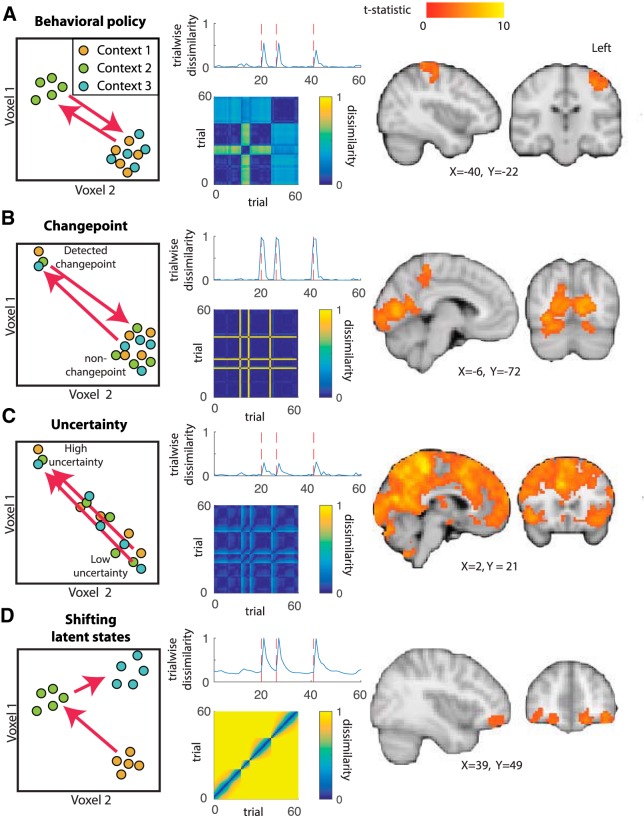Figure 3.
Dissociable explanations for task-driven changes in trialwise dissimilarity. Left, Context changes could affect different sorts of representations that are thought to be involved in task performance. A change in context could elicit a large representational change (arrows) in the behavioral policy (A), an internal assessment of CPP (B), the current level of RU (C), or a latent state that shifts in proportion to learning (D). Middle, Each of these representations would predict increased trialwise dissimilarity after change points (top, red dotted lines indicate change points). However, dissimilarity matrices constructed across all trials (adjacent and nonadjacent) reveal unique representational profiles for each source of change point related dissimilarity (bottom). Right, Patterns of voxel activations across trials revealed an anatomical dissociation among representations of behavioral policy (A; left motor cortex), CPP (B; occipital cortex), RU (C; widespread), and shifting latent states (D; OFC). Brain images in each panel reflect t-statistic maps thresholded at p < 0.01 after correction for multiple comparisons. For analogous results using an alternative preprocessing pipeline (i.e., no smoothing before RSA), see extended data Figure 3-1.

